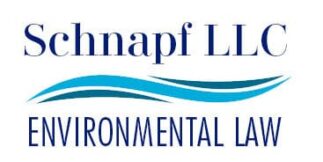As discussed in more detail on our New York Superfund (“SSF”) Program page, New York adopted the nation’s first superfund program in 1979 (formally known as Inactive Hazardous Waste Disposal Site Law) following discovery of the infamous Love Canal. Because the SSF pre-dates the federal Comprehensive Environmental Response, Compensation and Liability Act (“CERCLA”), the New York SSF differs in some significant respects from CERCLA.
The 2025 Executive Budget adopted sweeping amendments to the SSF that largely conforms the cleanup program to CERCLA including enhanced enforcement mechanisms and new defenses. The changes are likely to significantly alter superfund practice in New York. The more significant revisions include:
- Codification of Responsible Party Definition- A new paragraph 11 has been added to the definitions of § 27-1323 that codifies the regulatory definition of responsible party adopted by New York State Department of Environmental Conservation (“NYSDEC”) in its Part 375 regulations. BCP Volunteers are excluded from the definition of responsible party provided that they are in “full compliance” with the BCP requirements and are not engaging in “bad faith” in its interactions with the NYSDEC;
- BFPP Defense- A new pargraph 5 is added to § 27-1323 establishing a Bona Fide Prospective Purchaser (“BFPP”) defense modeled after the CERCLA BFPP of 42 U.S.C. 9601(40). Interestingly, the BFPP is retroactive and applies to a person who acquired title or possession on or after October 7, 2003 (the effective date of the 2003 amendments) who otherwise satisfy the BFPP requirements. Like with CERCLA, a tenant may qualify directtly for the BFPP or derivatively (i.e., its landlord qualifies as a BFPP);
- Financial Responsibility- A new § 27-1325 requires the NYSDEC to promulgate regulations establishing financial assurance requirements;
- Cost Reoovery Authority– Paragraph 1 of a new § 27-1327 provides a statutory right of cost recovery for response costs and natural resources damages (“NRD”) in favor of the State. Previously, New York has had to use CERCLA to recovery its cleanup costs. Paragraph 3 of this new section authorizes NYSDEC to seek fines and penalties in addition to cost recovery;
- Non-Priority Environmental Lien-Paragraphs 5 through 12 of new section § 27-1327 establishes a non-priority environmental lien for the amount of cleanup costs and NRD incurred or suffered by the State along with the procedures for perfecting and satisfying the lien. An Environmental Lien may be filed against to real property where the cleanup occurred or that is owned by a party liable to the State for response costs or NRD. The lien attaches when the State incurs costs or upon a judicial judgment of NRD liability, a responsible party fails to pay the costs within 90 days of a written demand or entry of NRD judgement and a notice of lien is filed pursuant to the Lien Law;
- Windfall Lien- Paragraph 13 of § 27-1327 creates a windfall Lien modeled after the CERCLA windfall lien of 42 U.S.C. 9607(r) for sites owned by BFPPs that are remediated by the NYSDEC and where the cleanup results in an increase in the fair market value of the property;
- Contribution Action- Paragraph 14 of § 27-1327 establishes a statutory right of contribution for responsible parties that is modeled after CERCLA section 113(f)(1)-(3);
- Statute of Limitations- Paragraph 15 of § 27-1327 establishes statute of limitations for cost recovery and contribution actions;
- Summary Abatement Order– Governor Hochul budget had proposed granting NYSDEC with authority to issue unilateral administrative orders (“UAOs”) like EPA has under CERCLA section 106. This provision was strongly opposed and the Legislature substituted the Governor’s proposal with a summary abatement provision in a new section § 27-1329 that is based on ECL § 71-301. Under this new seciton, the NYSDEC the commissioner may issue an order finding an imminent danger to health or welfare of the people or environment. If a party fails to comply or refuses to enter a remedial program the DEC may refer the matter to the attorney general for injunctive relief or cost recovery. Orders may be challenged administratively and, if upheld, via an Article 78 proceeding. Failure to comply with such an order can result in fines of 37,500 per day. A person who complies with the order may subsequently file a petition for reimbursement within 60 days of completing the work required by the order on grounds that it was not a responsible party or that the remedy was selected by NYSDEC was arbitary and capricious;
- Civil Penalites– The civil penalties set forth in § 71-2705 are increased from $37,500 per day to $65,000 per day;
- PFAS Cleanup Standards– The legislation provides NYSDEC shall update its and groundwater and soil cleanup objectives within two years of the State Department of Health (“NYSDOH”) issuing a maximum contaminant level (“MCL”) for a PFAS substance. The NYSDEC is also required to establish interim generic PFAS soil and groundwater testing guidance January 1, 2027 until NYSDOH establishes MCLs , notification, or action levels for any PFAS chemical.
